Time blocking is a straightforward method to manage your time effectively. It involves assigning specific time slots in your planner for tasks, helping you stay organized, reduce distractions, and improve productivity. Here’s how to make it work:
With tools like Hobonichi planners, stickers, and highlighters, you can balance functionality with style, making your planner a tool for both productivity and creativity.
Time blocking is a scheduling method where you assign specific time slots to tasks or activities. It helps you take charge of your day by giving each task a dedicated place in your planner.
At its core, time blocking means assigning a set amount of time to a particular task. Cal Newport, author of Deep Work, explains its effectiveness:
"A 40 hour time-blocked work week, I estimate, produces the same amount of output as a 60+ hour work week pursued without structure."
This method is especially useful for creative planning. Here’s how it helps:
| Benefit | How It Helps | Impact |
|---|---|---|
| Focus Management | Allocates uninterrupted time to tasks | Cuts down on task-switching |
| Creative Flow | Sets aside time for artistic work | Sustains creative momentum |
| Reality Check | Makes your available time clear | Avoids overloading your schedule |
| Habit Building | Encourages regular routines | Supports long-term consistency |
Now, let’s explore how to bring time blocking into your planner.
To make this method work, customize it to fit your planner and routine. If you’re using a Hobonichi Weeks planner, for instance, its weekly layout naturally divides into thirds using the dotted lines .
Mike Vardy, founder of Productivityist, highlights the value of intentional scheduling:
"Knowing what the day ‘means’ to me allows me to get the things I need and want to accomplish without seeing undetermined ‘ought to do’ items on a to do list. As a result, I have less decision fatigue and even have more energy when I spend time with my kids."
Here are some tips to use time blocking effectively:
Cal Newport also suggests scheduling even reactive tasks intentionally:
"Periods of open-ended reactivity can be blocked off like any other type of obligation. Even if you’re blocking most of your day for reactive work, for example, the fact that you’re controlling your schedule will allow you to dedicate some small blocks (perhaps at the schedule periphery) to deeper pursuits."
This method works with any planner, from bullet journals to Hobonichi Weeks or Erin Condren planners, while keeping its core benefits intact.
Pick a format that works with your planner’s layout and helps you organize your day effectively. Here are some common block types to consider:
| Block Type | Duration | Ideal For |
|---|---|---|
| Focus Blocks | 60–120 mins | Deep work or creative tasks |
| Admin Blocks | 15–30 mins | Emails and quick tasks |
| Break Blocks | 5–15 mins | Short rests or transitions |
| Personal Blocks | 30–60 mins | Self-care or exercise |
Make your planner both functional and visually appealing. Products like Erin Condren’s planner system offer stickers that are both practical and decorative .
Try color-coding for better organization:
Incorporate themed or functional stickers to keep tasks clear while adding a bit of flair. Just remember to keep decorations simple to avoid cluttering your planner. These strategies can help you stay on top of your time blocking goals.
Even with a well-organized plan, unexpected events can throw off your schedule. A good rule of thumb is to set aside about 20% of your day for unplanned tasks .
Here are a few common disruptions and practical ways to manage them:
| Disruption Type | Solution | Implementation |
|---|---|---|
| Urgent Tasks | Add flexible blocks | Keep open slots between major tasks for flexibility |
| Meeting Changes | Use buffer times | Insert short buffers between scheduled activities |
| Project Overruns | Include flex periods | Allocate extra time for tasks that may run longer |
| Emergency Requests | Reserve backup blocks | Leave a daily unassigned block for last-minute needs |
By planning for these disruptions, you can keep your day on track without feeling overwhelmed.
"This type of planning is like a chess game, with blocks of work getting spread and sorted in such a way that projects big and small all click into completion with (just enough) time to spare." – Cal Newport, Productivity Expert
Once you’ve adjusted your schedule to handle changes, it’s important to maintain the look and feel of your planner while keeping it functional. A visually pleasing planner can still support effective time management.
Here are some tips to balance style and practicality:
Color-Coding for Flexibility:
Visual Priority Indicators:
With these strategies, you can keep your planner organized and visually appealing, even when unexpected changes arise.
Having the right tools on hand can make your time blocking system more efficient and enjoyable. Whether you’re aiming for practicality or a touch of flair, these supplies can help you stay organized and inspired.

Dark Moon Paper creates sticker kits that can add personality to your planner. Popular options include Lilac Dusk, Cottage Succulents, Winter Hygge, and Electric Forest. These stickers can transform plain planner pages into something visually appealing while supporting your time management.
Here are some must-have tools to enhance your time blocking setup:
| Tool Category | Recommended Items | Average Price |
|---|---|---|
| Core Planning | Hobonichi Cousin A5 or Erin Condren Hourly | $35.00 |
| Writing Tools | Zebra Mildliner Dual Tip Highlighters | $3.00 |
| Organization | Page Pins for Quick Access | $7.00 |
| Time Block Aids | Time Block Sticker Sets | $8.00 |
| Accessories | C&P Sticker Tweezers | $6.00 |
These tools strike a balance between functionality and style, helping you create a system that works for you.
"Honestly, the Hobonichi kind of defies explanation. It’s sold and marketed as a planner, and many people use it for that purpose, but the pages aren’t set up for any particular system." – The Gentleman Stationer
Start with the basics and expand your collection as your planning style develops. For example, Zebra Mildliner highlighters are perfect for creating a color-coded system to keep your tasks organized and visually clear.
Pair functional stickers with essential tools to enhance your setup. Dark Moon Paper’s transparent dot stickers ($8.00) work well as subtle markers, while Time Block Sticky Notes ($5.00) offer flexibility for scheduling without compromising on aesthetics.
By using practical time blocking strategies, your planner becomes more than just a schedule – it becomes a way to balance productivity and creativity. Time blocking helps structure your day, blending efficiency with creative planning. Studies show that professionals who use this method often get more done compared to those who don’t, making it a great tool for staying productive while nurturing your creative side.
Here are some essential elements to make time blocking work:
| Time Blocking Element | Implementation Tips | Benefits |
|---|---|---|
| Buffer Time | Add 15–30 minutes between tasks | Helps reduce stress and smooth transitions |
| Peak Hours | Plan challenging tasks during your most productive times | Makes the most of your energy levels |
| Creative Touches | Use color coding or themed stickers | Improves visual organization and clarity |
| Flexibility | Adjust your blocks when needed | Keeps your schedule practical and adaptable |
By including these elements, you can create a system that’s both effective and tailored to your needs.
Avoid overloading your schedule to protect your creative time. Reserve specific blocks for focused tasks and creative planning. This balance ensures your planner stays functional while also reflecting your personal style.
"This type of planning, to me, is like a chess game, with blocks of work getting spread and sorted in such a way that projects big and small all seem to click into completion with (just enough) time to spare." – Cal Newport
Find the right balance by combining structured time blocks with creative tools. Whether you use supplies from Dark Moon Paper or other planning resources, make your time blocks visually appealing without losing their purpose. The goal is to strike a balance between organization and creativity that works for your unique planning approach.
Stickers Made for Planning
Our custom stickers are a fuss-free way to brighten up your planner pages with perfectly-sized designs that add a spark of personality to every layout.
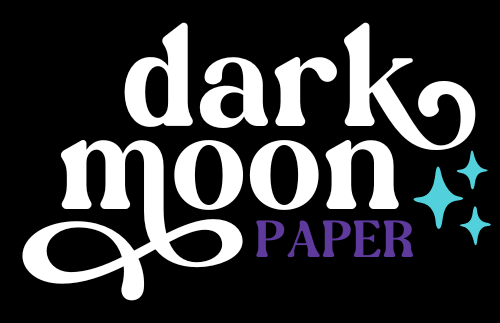
Why use planner stickers?
Planner stickers make organizing easy, fun, and personal! Add color, creativity, and structure to every page, transforming your planner into a tool that reflects you. Perfect for tracking, decorating, and staying inspired daily!
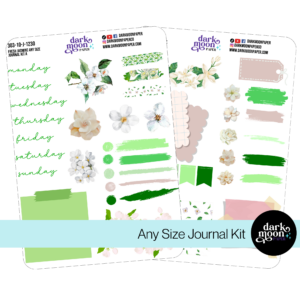
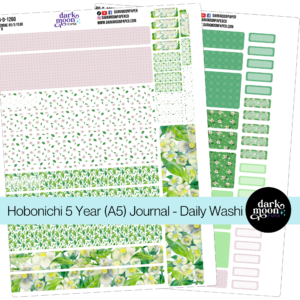
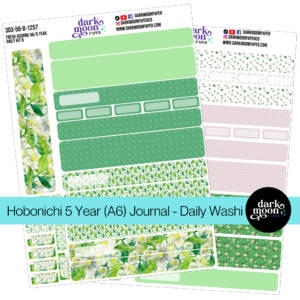
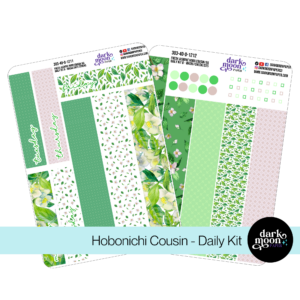

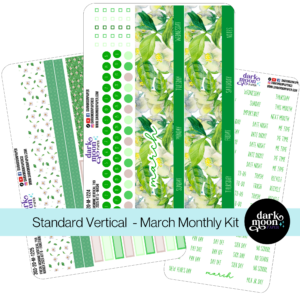

Hello and welcome!
I’m Rachael Snow, a lifelong artist and entrepreneur, and I started Dark Moon Paper to blend my love of art, technology, and the mysterious beauty of the world around us. My sticker kits are meant to set the mood, tell a story, and give you a little escape from the ordinary.
I work from my cozy studio tucked away in the beautiful woods of Oregon, surrounded by nature and a dark night sky full of stars.